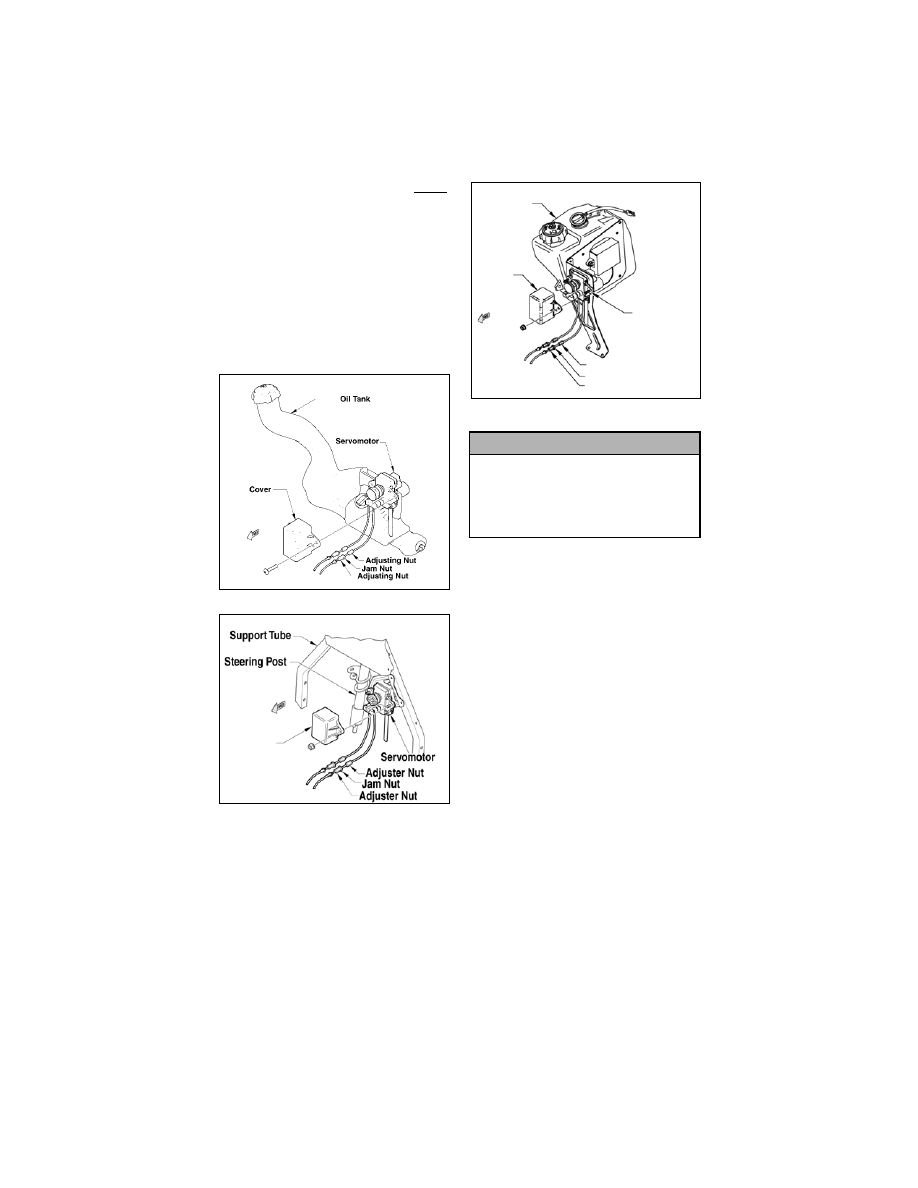Snowmobile Arctic Cat (2006 year). Instruction - part 7

24
GENERAL INFORMATION
NOTE: The measurements must
be equal and within the specifica-
tions from the chart. If the mea-
s u r e m e n t s a r e w i t h i n s p e c i -
fications, no adjustment is neces-
sary. If they are not within specifi-
cations, proceed to step 5.
5. Loosen the jam nut on the cable
housing to be adjusted; then
u s i n g t h e a d j u s t i n g n u t s ,
lengthen or shorten the housing
as needed.
738-232B
0739-715
739-581A
6. While holding the adjusting nut
in place, tighten the jam nut
securely.
7. Install the actuating cables to
the servo; then install the servo
cover.
EXHAUST CONTROLLED
TIMING (ECT) SYSTEM (Firecat
500)
This system automatically adjusts
the ignition timing to provide maxi-
mum performance through a variety
of operating conditions. The CDI
unit receives input on engine RPM
(demand) and exhaust pipe tempera-
ture (engine condition) and adjusts
the ignition timing accordingly. This
system is not adjustable and is main-
tenance free.
Firecat/Sabercat
Crossfire/M-Series
! CAUTION
The correct engine oil to use is
Arctic Cat Synthetic APV 2-
Cycle Oil (p/n 2639-512). Any
substitute may cause an APV
malfunction.
King Cat/ZR